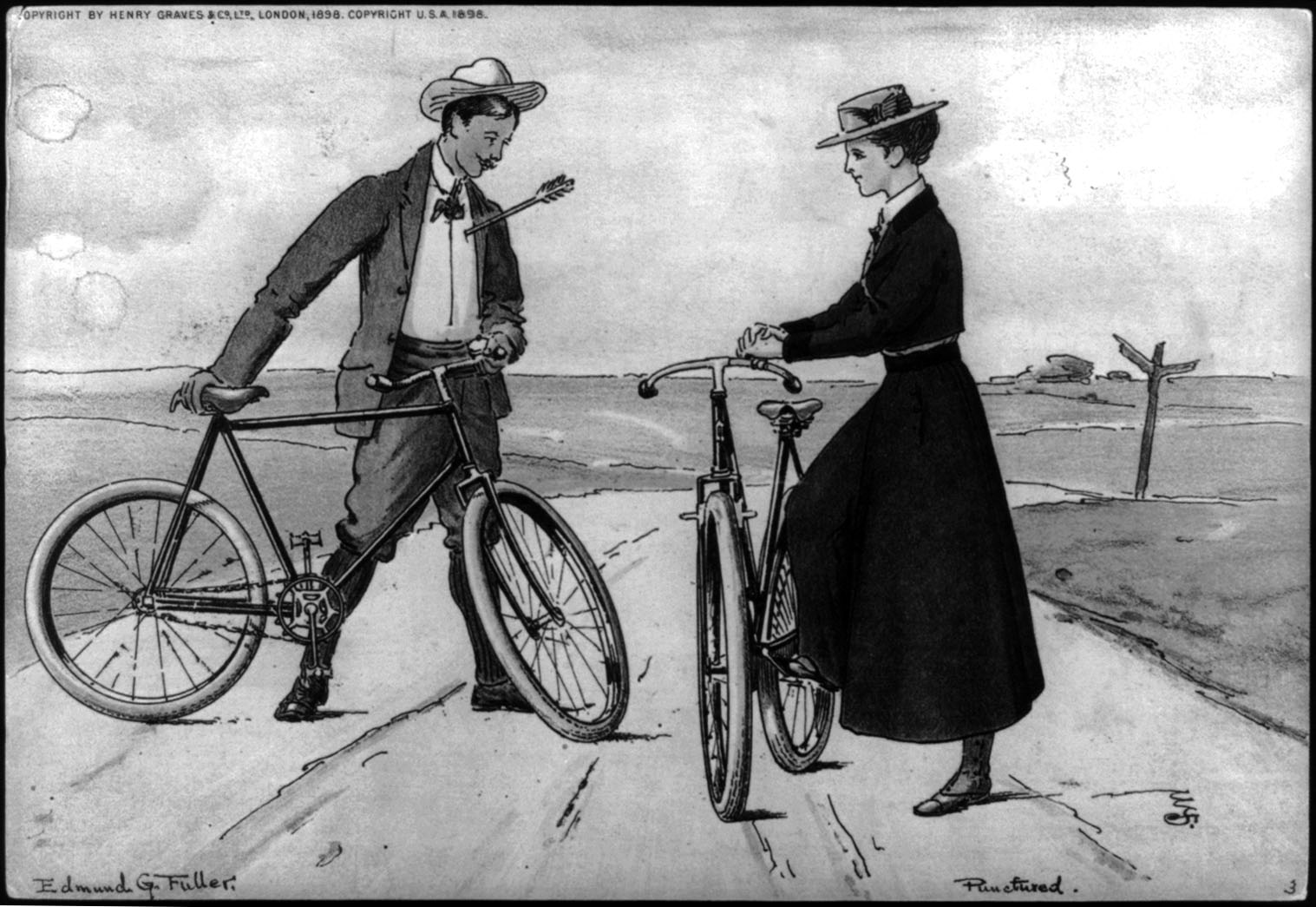Another excerpt from The Century Illustrated Monthly Magazine (Volume 54, May-October 1897), “Dangers and Benefits of the Bicycle” by A.L. Benedict, MD (who apparently had quite the fondness for incredibly long paragraphs)
EFFECTS ON CLOTHING AND MORALS.
 The bicycle seems destined to effect a reform in clothing. Sensible shoes, and neckwear that will not interfere with the poise of the head nor compress the great blood-vessels, have already become popular. Otherwise the ordinary attire of men has no specially objectionable features, though breeches are certainly more comfortable than trousers during hot weather, for bicycling or any other purpose. The wheeling-costumes thus far devised for women have shown a realization of the unfitness of ordinary dress rather than an appreciation of the changes needed. The one hygienic result that has been achieved by all efforts in this direction is the elimination of the long skirt which sweeps the filth and infection of the highway into the homes of civilized man, and doubtless is the cause of many an inexplicable case of contagious disease. If the fashion would only extend to other street dress, we could forgive the many offenses of wheeling-costumes against modesty, good taste, and comfort.
The bicycle seems destined to effect a reform in clothing. Sensible shoes, and neckwear that will not interfere with the poise of the head nor compress the great blood-vessels, have already become popular. Otherwise the ordinary attire of men has no specially objectionable features, though breeches are certainly more comfortable than trousers during hot weather, for bicycling or any other purpose. The wheeling-costumes thus far devised for women have shown a realization of the unfitness of ordinary dress rather than an appreciation of the changes needed. The one hygienic result that has been achieved by all efforts in this direction is the elimination of the long skirt which sweeps the filth and infection of the highway into the homes of civilized man, and doubtless is the cause of many an inexplicable case of contagious disease. If the fashion would only extend to other street dress, we could forgive the many offenses of wheeling-costumes against modesty, good taste, and comfort.
If the bicycle were responsible simply for distracting the attention of thousands of young men and women from artificial fashions in dress, and for creating an honest though sometimes mistaken effort at dress-reform, a great good would have been accomplished. But it is doing much more than this. It is establishing an ideal of physical health, and making deservedly unpopular the sickly heroine of less than a generation ago. The wheel is affording a wholesome outlet for energies that would otherwise be wasted in frivolity or actual dissipation, and in elevating the physical is also raising the moral tone of the youth of our land. The half-grown boy who formerly thought it manly to fuddle his brain with liquor or weaken his heart with tobacco, has changed his ideal to the not very lofty but certainly more innocent one of maintaining a reputation for speed or endurance, and while in training he proudly foregoes bad habits that he would be ashamed to abandon as a mere matter of principle. The use of strong liquors among the class of young men from whom cyclists are largely drawn is on the wane, and even « soft drinks » are used with increasing discretion.
All of this means not that the bicycle is to be used by everybody, nor that it is to be the physical and moral salvation of the age, but that it is aiding in a tangible manner in the solution of many problems, social, economic, moral, and hygienic.
Related Reading
- A Page out of the History Books: Benefits of Biking for Spinsters
- The Bicycle and Women’s Independence
Your Turn
- What list of problems “social, economic, moral, and hygienic” do you think the bike solves for us today?
- Can you imagine riding in all those clothes even with bloomers?








